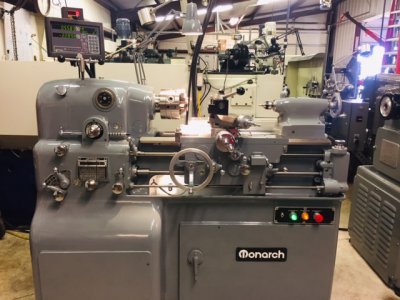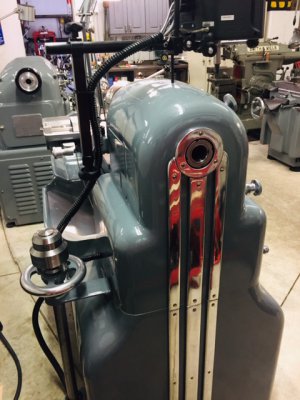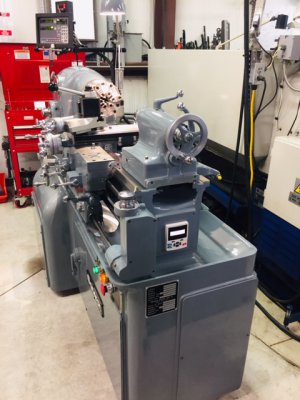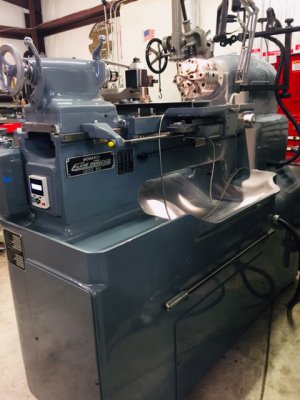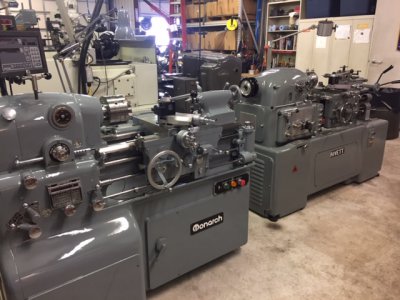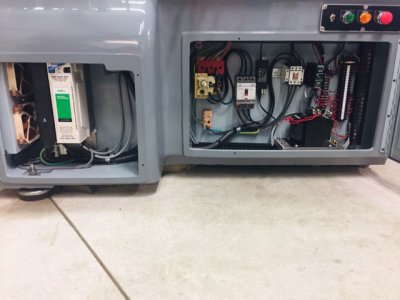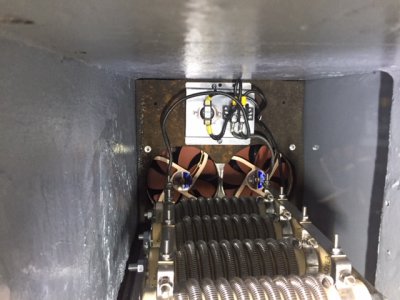The issue is several fold, a 1200 RPM motor will be limited as to the maximum RPM, and you will plain just run out of Hp and applied torque to the spindle w/o a back gear. The torque is a function of the motor torque and the mechanical ratio. The 6 pole washdown motor has a constant torque ratio of 10:1, so assuming you are belting it to a 1:1 ratio and say 6 Hz to 120 Hz would give you a speed range w/o a back gear of 120-2400 RPM. But at 6 Hz, your 7.5Hp motor will have a 0.75 Hp rating. Without the back gear it will be very anemic and probably not that usable below 200 RPM. A 4P vector motor in this size range can be run to 5000-6000 RPM, so a usable frequency range of say 10-200 Hz, and you could do this with a 2:1 belt ratio. this would give you a usable speed range of 100-3000 Hz, as well as a higher mechanical advantage. Above the motor base speed a inverter/vector motor can retain full Hp up to its maximum speed, where standard motors start to fall off around 90-100 Hz. There is also a range of inverter rated motors as to their performance window, in general an inverte motor can be run across the line with or w/o a VFD, a vector motor can only be run with a VFD. Both inverter and vector motors can operate at near 0 speed (constant torque of 1000:1 or greater), a vector motor can have more precise speed control and "0/low speed" speed torque (see attached Baldor description). High performance inverter vector motors tend to be TENV or TEBC, and not TEFC. This has to do with the thermal dissipation ability when operating at the RPM extremes.
There are quite a few threads on 10EE conversions to 3 phase, but w/o the back gear anything below 10 Hp can result in lackluster low end performance. Incorporating the back gear, most conversions use a 5 or 7.5 Hp. Incorporating the back gear requires precise machining of a gearbox interface adapter plate, I recently spoke to another person that did this conversion and he indicated that you needed to have a precision of 0.0005" to maintain the proper gear spacing. If you look at the current production Monarch 10EE they use a 7.5Hp motor with an encoder feedback, as well as a 5:1 back gear reduction to achieve a 25-4000 RPM speed range.
https://monarchlathe.com/products/lathes/toolroom/monarch-ee-series#
If you are planning a 3 phase motor conversion, a 4P inverter/vector type motor offers the greatest speed range as well as the widest performace window in this type of motor. Common replacement motors are the Marathon Blackmax and Bluemax, Baldor IDNM/ZDNM, Reliance, Lincoln, Leeson and other motor manufactures also have their inverter/vector models. You need to look for a motor with a constant torque ratio of 1000:1 or higher as well as a maximum speed of around 3X the base speed (180-200 Hz). This is just a starting point, there are many other build factors to consider.
